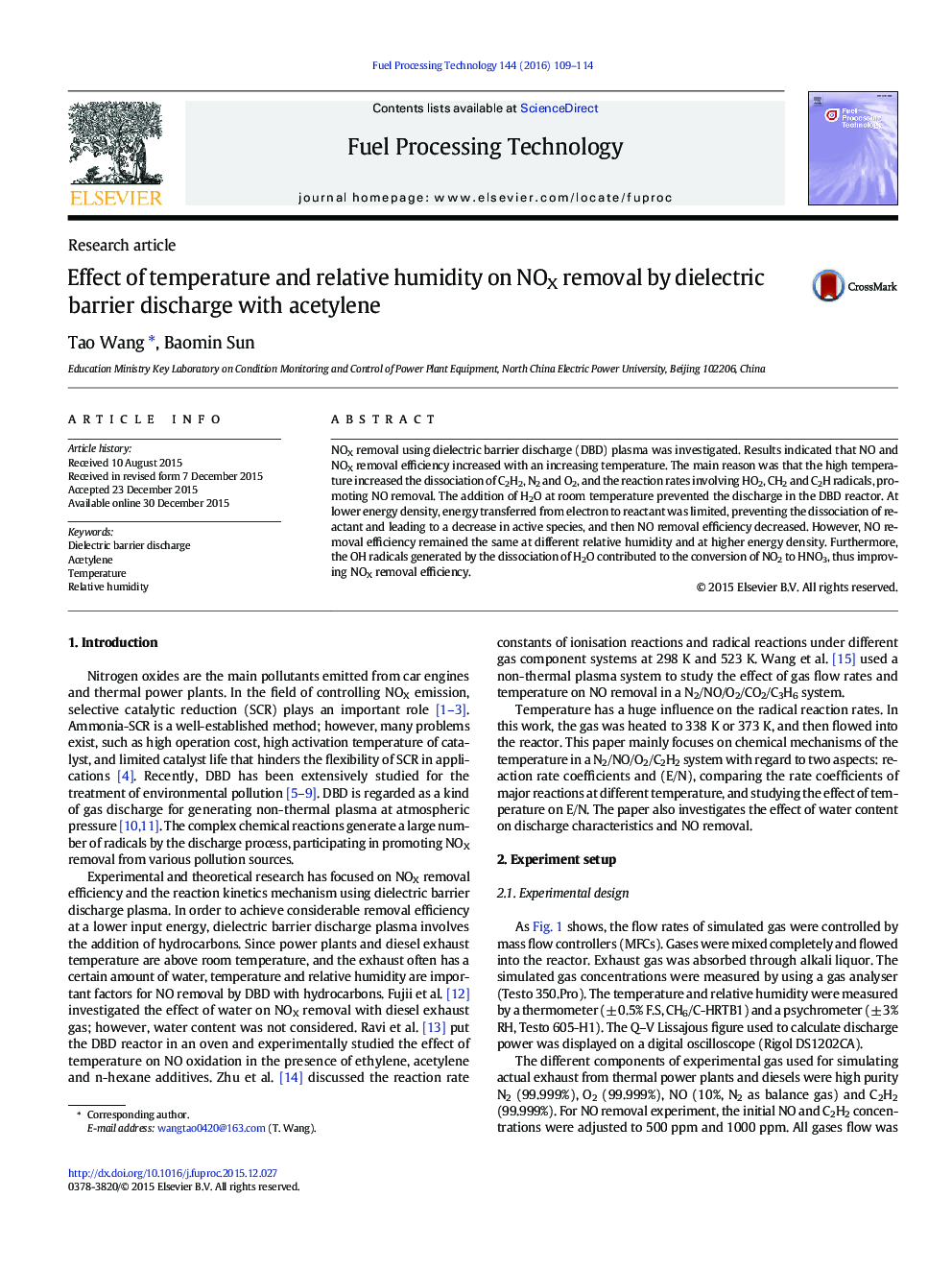| Article ID | Journal | Published Year | Pages | File Type |
|---|---|---|---|---|
| 209262 | Fuel Processing Technology | 2016 | 6 Pages |
•NOx removal by dielectric barrier discharge was studied.•C2H2 addition improved NOx removal efficiency.•NOX removal efficiency increased when gas temperature increased with acetylene.•H2O constrained the discharge in DBD reactor at room temperature.•NO removal efficiency decreased at high relative humidity
NOX removal using dielectric barrier discharge (DBD) plasma was investigated. Results indicated that NO and NOX removal efficiency increased with an increasing temperature. The main reason was that the high temperature increased the dissociation of C2H2, N2 and O2, and the reaction rates involving HO2, CH2 and C2H radicals, promoting NO removal. The addition of H2O at room temperature prevented the discharge in the DBD reactor. At lower energy density, energy transferred from electron to reactant was limited, preventing the dissociation of reactant and leading to a decrease in active species, and then NO removal efficiency decreased. However, NO removal efficiency remained the same at different relative humidity and at higher energy density. Furthermore, the OH radicals generated by the dissociation of H2O contributed to the conversion of NO2 to HNO3, thus improving NOX removal efficiency.
